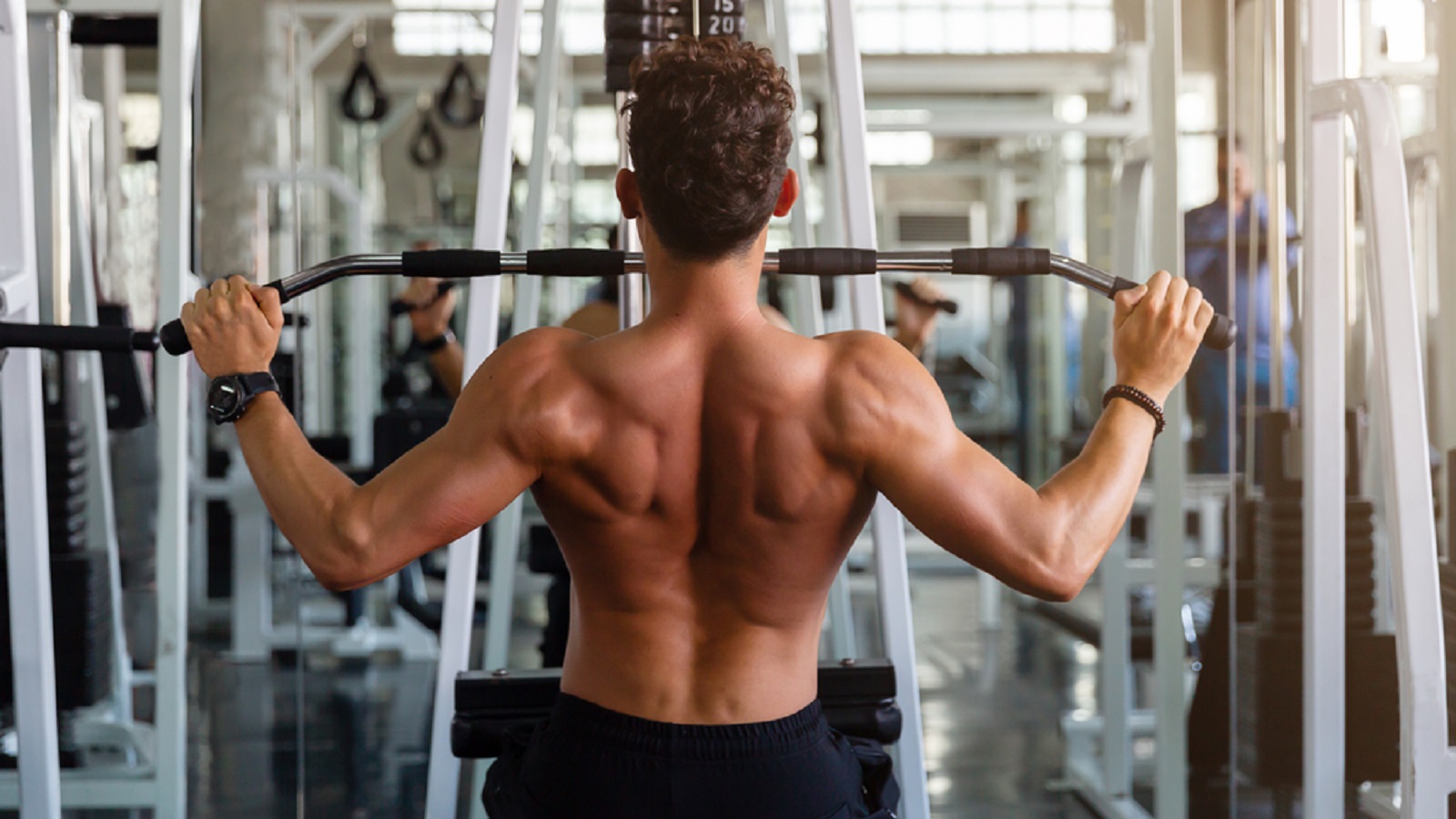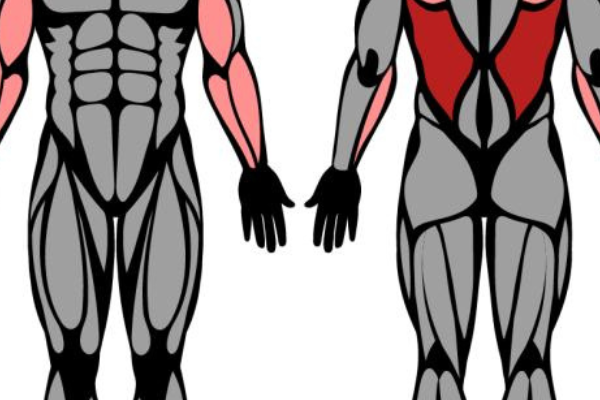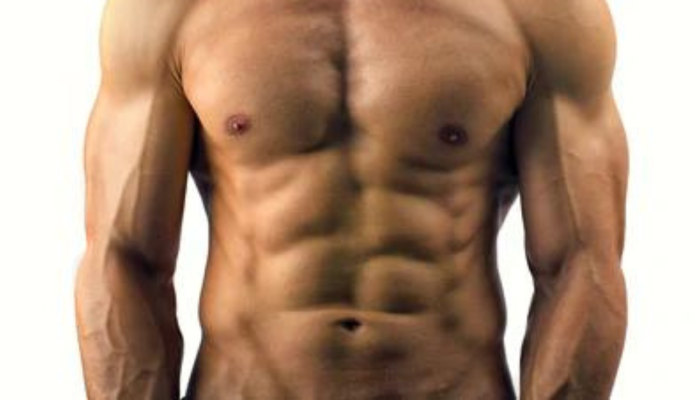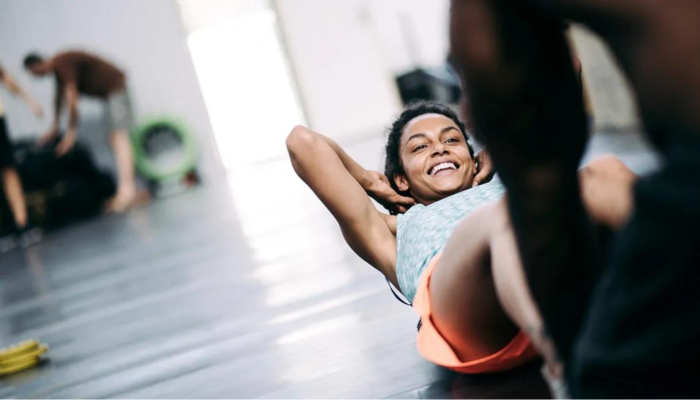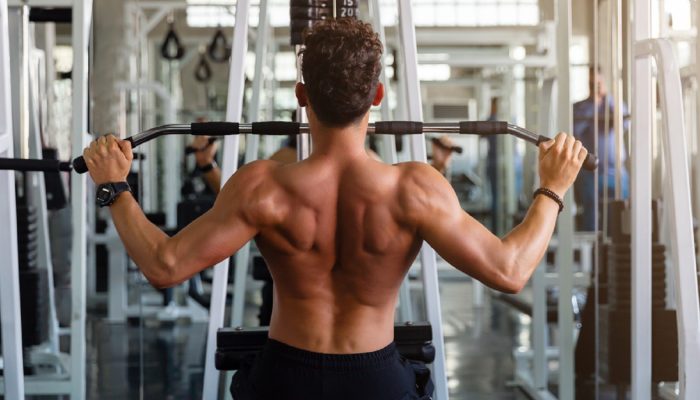
This Muscle is the Unsung Hero of the Upper Back. Train It Properly.
The rhomboid muscles, positioned between the shoulder blades, are essential for upper back strength and stability. They play a crucial role in retracting and stabilizing the shoulder blades, which is vital for proper posture and overall upper body function. Unfortunately, they often don’t get the attention they deserve in many workout routines. If you want to improve your posture, enhance your strength, and support your upper back, focusing on rhomboid muscle exercises is key.
Here’s a detailed guide to the best rhomboid exercises to incorporate into your workout routine.
Best Rhomboid Exercises
Inverted Row
Benefits of the Inverted Row
The inverted row is an excellent bodyweight exercise that targets the rhomboids along with the back muscles. It helps to improve upper back strength, correct posture, and enhance scapular retraction. This exercise also engages the core, contributing to overall stability and strength.
How to Do The Inverted Row
- Set up a barbell on a rack or use a sturdy horizontal bar. Position it at about waist height.
- Grab the bar with an overhand grip, your hands shoulder-width apart.
- Hang beneath the bar with your body straight, feet on the floor or elevated on a bench.
- Pull your chest towards the bar by retracting your shoulder blades and bending your elbows.
- Lower yourself back to the starting position with control.
Band Pull-Apart
Benefits of the Band Pull-Apart
Band pull-aparts are a simple but effective exercise to target the rhomboids and rear deltoids. This movement enhances shoulder stability and posture while strengthening the upper back muscles.
How to Do The Band Pull-Apart
- Hold a resistance band with both hands, arms extended in front of you at shoulder height.
- Pull the band apart by spreading your arms out to the sides, keeping your elbows slightly bent.
- Squeeze your shoulder blades together as you pull the band.
- Return to the starting position with controlled movement.
Low-to-High Band Row
Benefits of the Low-to-High Band Row
The low-to-high band row focuses on the upper back muscles, including the rhomboids. It emphasizes the vertical pulling motion, which enhances the upper back’s strength and stability.
How to Do The Low-to-High Band Row
- Secure a resistance band to a low anchor point.
- Grab the band with an overhand grip and step back to create tension.
- Pull the band upwards and towards your torso, keeping your elbows high.
- Squeeze your shoulder blades together at the top of the movement.
- Slowly return to the starting position.
Cable Seated Row
Benefits of the Cable Seated Row
The cable seated row is a compound exercise that effectively targets the rhomboids, trapezius, and other back muscles. It promotes balanced strength development and improves posture.
How to Do The Cable Seated Row
- Sit on a bench with your feet secured on the footrests and grab the cable handle.
- Start with your arms extended and back straight.
- Pull the handle towards your torso, bending your elbows and retracting your shoulder blades.
- Slowly extend your arms back to the starting position.
Cable Reverse Fly
Benefits of the Cable Reverse Fly
Cable reverse flies are great for isolating the rhomboids and rear deltoids. This exercise helps to enhance upper back strength and shoulder stability.
How to Do The Cable Reverse Fly
- Set the cables to chest height on a dual cable machine.
- Grab the handles with an overhand grip and step back to create tension.
- With a slight bend in your elbows, pull the handles out to the sides.
- Squeeze your shoulder blades together at the end of the movement.
- Slowly return to the starting position.
Low-to-High Cable Row
Benefits of the Low-to-High Cable Row
This variation of the cable row emphasizes the upper back muscles, including the rhomboids. It enhances strength and stability through a vertical pulling motion.
How to Do The Low-to-High Cable Row
- Attach a single handle to the low pulley of a cable machine.
- Stand with your feet shoulder-width apart and grab the handle with one hand.
- Pull the handle upward and towards your torso, keeping your elbow high.
- Squeeze your shoulder blades together at the top of the movement.
- Return to the starting position with control.
Single-Arm Cable Row
Benefits of the Single-Arm Cable Row
The single-arm cable row allows for a greater range of motion and helps correct muscle imbalances between sides. It targets the rhomboids and other upper back muscles.
How to Do The Single-Arm Cable Row
- Attach a handle to the low pulley of a cable machine.
- Stand with your feet shoulder-width apart and grab the handle with one hand.
- Pull the handle towards your torso, keeping your elbow close to your body.
- Squeeze your shoulder blade at the top of the movement.
- Return to the starting position and switch sides after completing the set.
Single-Arm Dumbbell Row
Benefits of the Single-Arm Dumbbell Row
The single-arm dumbbell row is a great way to isolate the rhomboids and build unilateral strength. It allows for a full range of motion and helps to address muscle imbalances.
How to Do The Single-Arm Dumbbell Row
- Place one knee and hand on a bench for support, holding a dumbbell in the opposite hand.
- Keep your back flat and your core engaged.
- Pull the dumbbell towards your torso, bending your elbow and retracting your shoulder blade.
- Lower the dumbbell back to the starting position with control.
Chest-Supported Dumbbell Row
Benefits of the Chest-Supported Dumbbell Row
The chest-supported dumbbell row minimizes lower back strain and allows you to focus on the rhomboids and upper back muscles. It promotes better form and isolation.
How to Do The Chest-Supported Dumbbell Row
- Lie face down on an incline bench with a dumbbell in each hand.
- Keep your chest and stomach supported by the bench.
- Pull the dumbbells towards your torso, squeezing your shoulder blades together.
- Lower the dumbbells back to the starting position.
Chest-Supported T-Bar Row
Benefits of the Chest-Supported T-Bar Row
The chest-supported T-bar row targets the rhomboids and traps effectively while reducing stress on the lower back. It allows for a strong contraction of the upper back muscles.
How to Do The Chest-Supported T-Bar Row
- Sit on the T-bar row machine with your chest supported.
- Grab the handles or bar with an overhand grip.
- Pull the bar towards your chest, retracting your shoulder blades.
- Slowly lower the bar back to the starting position.
Barbell Row
Benefits of the Barbell Row
The barbell row is a fundamental compound exercise that targets the rhomboids, traps, and lats. It’s excellent for building overall back strength and thickness.
How to Do The Barbell Row
- Stand with your feet shoulder-width apart, holding a barbell with an overhand grip.
- Bend at the hips and knees, keeping your back flat.
- Pull the barbell towards your lower rib cage, retracting your shoulder blades.
- Lower the barbell back to the starting position.
Chest-Supported Machine Row
Benefits of the Chest-Supported Machine Row
This machine-based exercise offers a stable and controlled movement, which helps to focus on the rhomboids and upper back muscles. It’s ideal for those who want to reduce strain on the lower back.
How to Do The Chest-Supported Machine Row
- Sit on the machine with your chest against the support pad.
- Grab the handles or bar with an overhand grip.
- Pull the handles towards your torso, squeezing your shoulder blades together.
- Return to the starting position with control.
How to Target the Rhomboids
Use an Overhand Grip
Using an overhand grip during exercises helps to engage the rhomboids more effectively. This grip encourages proper shoulder blade retraction and enhances muscle activation.
Practice Protraction and Retraction
Incorporate movements that focus on both protraction (moving the shoulder blades apart) and retraction (moving them together). This practice strengthens the rhomboids and improves scapular mobility.
Nail the Arm Path
Ensure that your arm path during exercises is correct to fully engage the rhomboids. Pulling the weights towards your torso and retracting your shoulder blades will maximize muscle activation.
Rhomboid Training Sets and Reps
For effective rhomboid training, aim for 3-4 sets of 8-12 reps for each exercise. Adjust weights and resistance as needed to maintain proper form and muscle engagement.
Remember Your Rhomboids
Incorporating these rhomboid muscle exercises into your routine will strengthen your upper back, improve posture, and enhance overall upper body function. Consistency and proper form are key to maximizing the benefits of these exercises.
By paying attention to your rhomboids and integrating these targeted workouts, you’ll support your back muscles and improve your overall strength and stability.
How to Integrate Rhomboid Exercises into Your Routine
To achieve the best results with rhomboid exercises, it’s important to integrate them effectively into your overall workout routine. Here are some tips on how to do that:
Create a Balanced Upper Back Routine
Incorporate rhomboid exercises alongside other upper back and shoulder exercises to ensure a balanced workout. Include movements that target different areas of the back, such as the lats and traps, to achieve comprehensive upper body strength. A well-rounded routine will help prevent muscle imbalances and improve overall posture.
Warm Up Properly
Before diving into your rhomboid exercises, ensure you perform a thorough warm-up. This can include dynamic stretches and light cardio to increase blood flow to your muscles and prepare your body for the workout. A proper warm-up reduces the risk of injury and improves exercise performance.
Focus on Form and Technique
Proper form is crucial for effectively targeting the rhomboids and preventing injury. Pay attention to your body alignment, control your movements, and avoid using excessive weights that compromise your technique. Performing each exercise with correct form will maximize muscle engagement and yield better results.
Incorporate Progressive Overload
To continue making progress, gradually increase the weight or resistance used in your rhomboid exercises. This principle of progressive overload challenges your muscles and promotes growth and strength development. Track your progress and make adjustments as needed to keep your workouts challenging.
Allow for Recovery
Muscle recovery is an essential part of any training program. Allow adequate rest between workouts to give your rhomboids and other muscles time to recover and grow. Incorporate rest days into your routine and consider using techniques such as stretching and foam rolling to support recovery.
Common Mistakes to Avoid
When performing rhomboid exercises, be mindful of common mistakes that can hinder your progress and increase the risk of injury:
Using Excessive Weight
Using too much weight can lead to poor form and ineffective muscle engagement. Focus on selecting a weight that allows you to perform the exercises with proper technique and control. As you become stronger, gradually increase the weight while maintaining good form.
Neglecting Other Back Muscles
Focusing solely on rhomboid exercises without addressing other back muscles can lead to imbalances and limited overall strength. Ensure your routine includes exercises that target the entire back, including the lats and traps, for a balanced approach.
Rushing Through Reps
Performing exercises too quickly can reduce their effectiveness and increase the risk of injury. Take your time with each repetition, focusing on the muscle contraction and proper movement. Controlled movements are key to maximizing the benefits of your workouts.
Ignoring Warm-Up and Cool-Down
Skipping the warm-up or cool-down can increase the risk of injury and limit the effectiveness of your workout. Always include a proper warm-up before exercising and a cool-down afterward to support muscle recovery and flexibility.
Combining Rhomboid Exercises with Other Training
To optimize your overall fitness, combine rhomboid exercises with other training modalities. For instance, pair these exercises with chest and shoulder workouts, or integrate them into a full-body strength training program. Here are a few examples of how to combine rhomboid exercises:
Full-Body Strength Training
Incorporate rhomboid exercises into a full-body strength training routine. For example, after performing compound movements like squats or deadlifts, add targeted rhomboid exercises to work on upper back strength and balance.
Push-Pull Workout Split
In a push-pull workout split, dedicate one day to pushing exercises (e.g., bench press, shoulder press) and another day to pulling exercises (e.g., rows, pull-ups). Include rhomboid exercises on the pulling day to enhance upper back strength and muscle development.
Upper-Lower Body Split
With an upper-lower body split, focus on upper body exercises, including rhomboid exercises, on one day and lower body exercises on another. This approach allows for focused training and adequate recovery for each muscle group.
Conclusion
The rhomboids are a vital component of your upper back that contribute to overall strength, stability, and posture. By incorporating a variety of rhomboid exercises into your routine, you can enhance your upper back muscles and support a well-rounded fitness program. Remember to focus on proper form, progressively challenge yourself, and maintain a balanced approach to your workouts. With dedication and consistency, you’ll achieve stronger, more defined rhomboids and a healthier, more functional upper back.
If you have any questions for us, you can see more at: heathcarenow, Youtube, Twitter(X),…
See more of our other articles: What is Jaw Pain ?, Catabolism vs. Anabolism: What’s the Difference?, Tennis Ball Massage for Myofascial Trigger Points

